Vicksburg National Military Park covers 20 miles of trenches, approaches, and parallels in its 1,800 acres. The 1,330 monuments, tablets, markers and plaques throughout the park tell the story of this 47-day siege around 8 miles of defensive earthworks and a 3-mile waterfront along the city’s high river bluff. Nine major earthen fortifications stretching from the northernmost Fort Hill to South Fort included redans, redoubts and lunettes with 14-foot walls connected by rifle pits with berms six feet thick. Eight of the nine fortifications, the 3rd Louisiana Redan being the exception, had ditches before them, 6-10 feet deep and 10-18 feet wide, to add to an attacker’s difficulty.

3rd Louisiana Redan
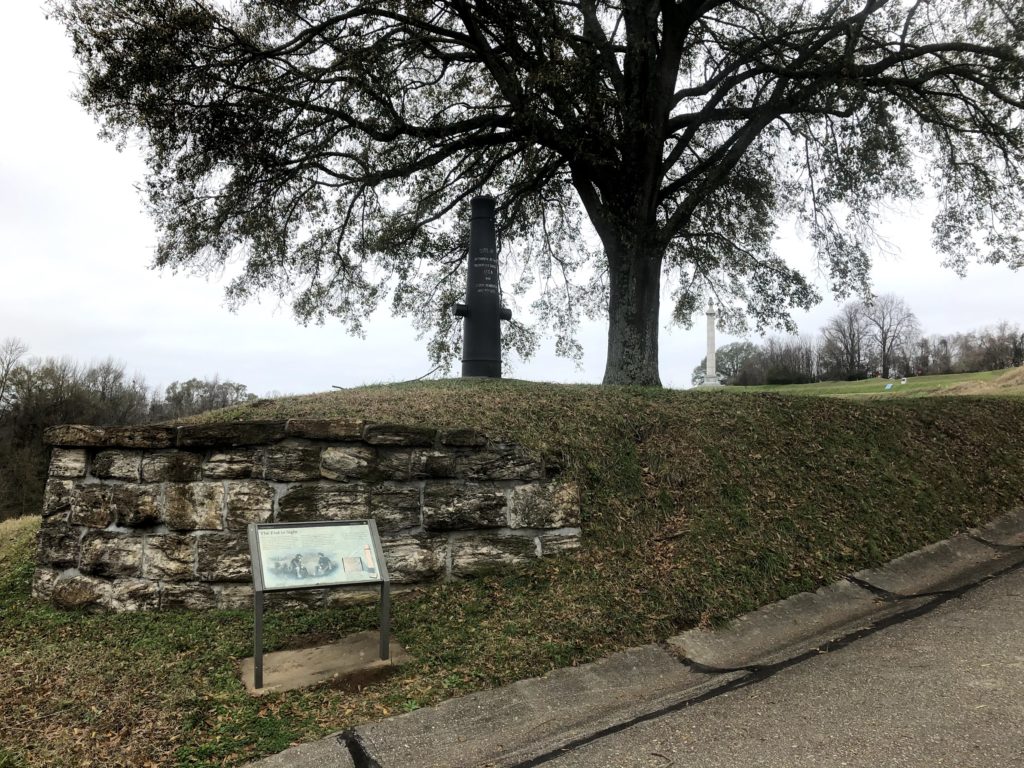
The site between lines where Grant and Pemberton met on July 3, 1863 to discuss terms of surrender.
The amount of shot and shell exchanged at Vicksburg staggers the imagination. The Federals fired 131,966 rounds from 220 cannon spread among 89 batteries in those 47 days. The 172 Confederate cannon included 103 field pieces and 69 heavy artillery. Fifty of these cannon guarded the town’s water approach and river, reducing the effective artillery strength of the landward defenses to 122 guns. The Union artillery massed for strength, the De Goyler Battery bringing as many as 22 pieces into action at one point against the Great Redoubt to its front. The southern defenses always remained outgunned. In addition to the rounds fired from Federal lines, Union gunboats fired 4,500 shells and their six mortar boats sent 7,000 two-hundred pound shells from their 13-inch mortars. Field pieces typically fired 6,10 or 12-pound shells while heavy pieces, divided among seacoast, garrison and siege guns, fired 30, 32 or 42-pound shells. Of those three types of heavy artillery, only the siege guns were typically mobile.
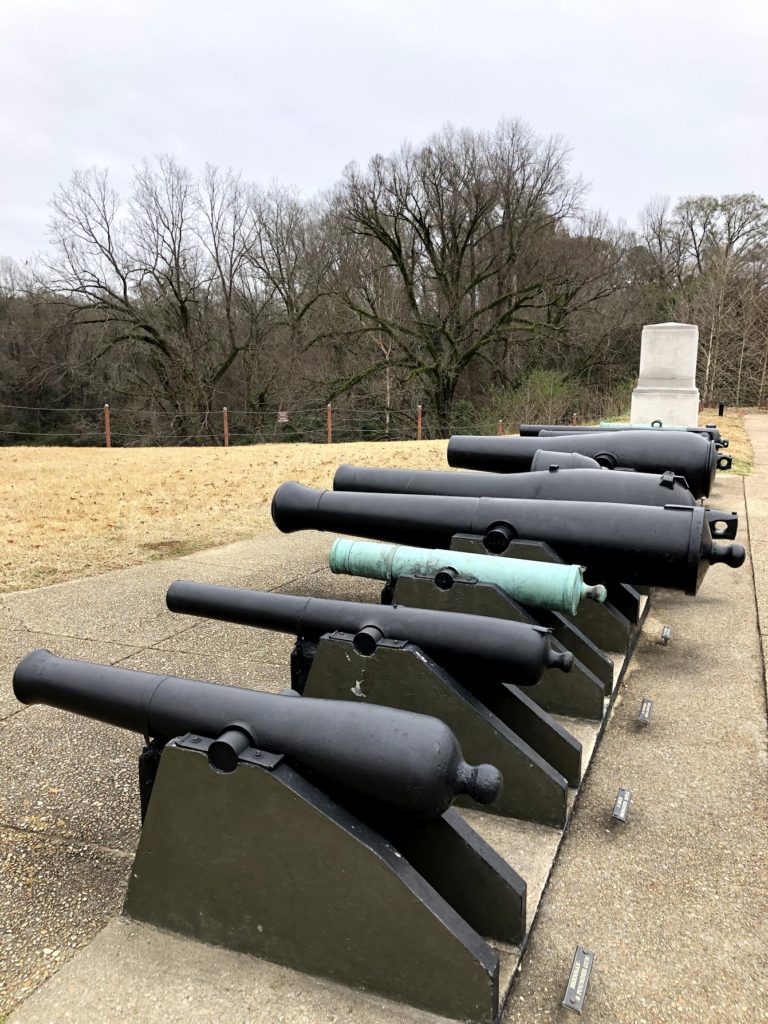
Various type of artillery in action at Vicksburg
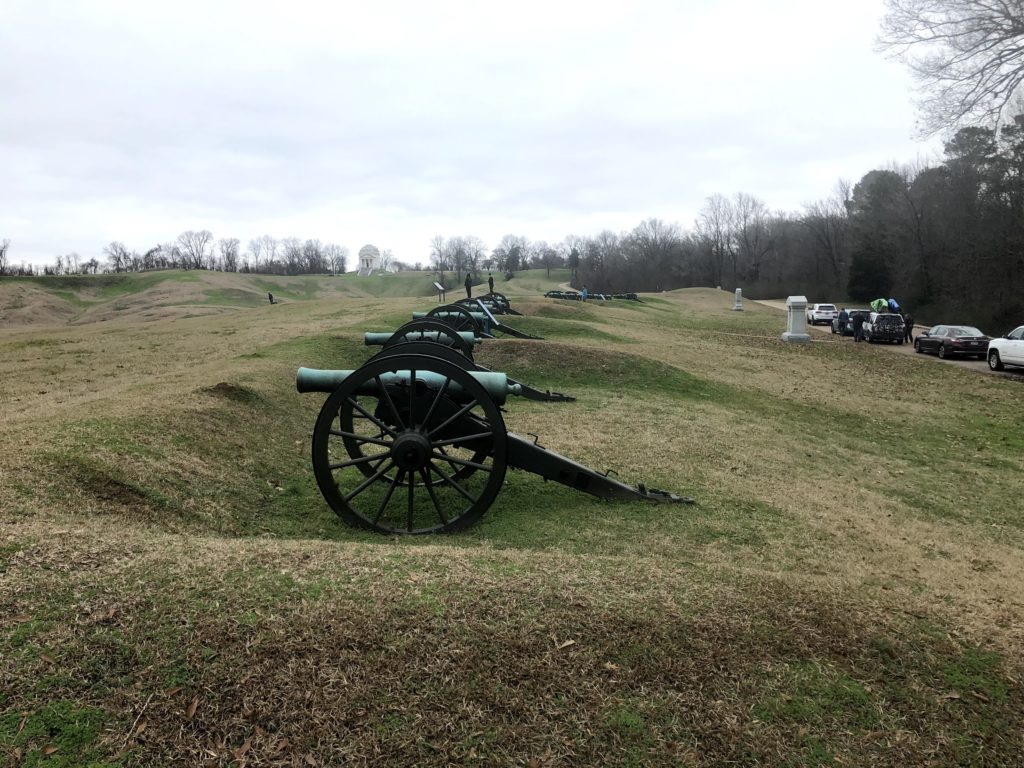
Battery De Golyer
Stories of close contact between the troops are almost as legendary as the attacks themselves. The May 19th and May 22nd attacks launched by Grant on the defenses failed with significant casualties. The attack on Stockade Redan during the May 22nd attack is among the more famous actions, led by 150 all-bachelor volunteers dubbed “the forlorn hope” for the suicidal nature of their mission. This group carried ladders forward under a hail of lead to put in place for following troops to scale the massive parapet. The few who made it discovered the ladder too short for the job, and found themselves hopelessly pinned down before the rebel defensive works. Of the 122 Congressional Medals of Honor awarded for acts of courage and bravery at Vicksburg, 81 went to members of this group.
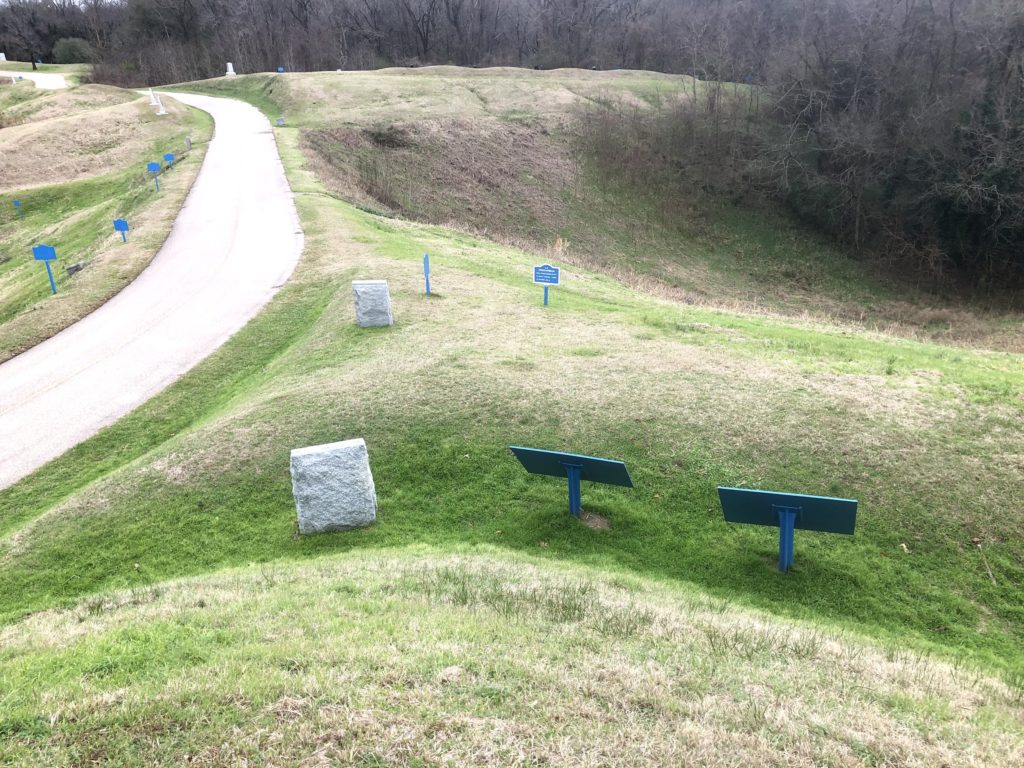
Point of furthest advance on May 22nd for “The Forlorn Hope”
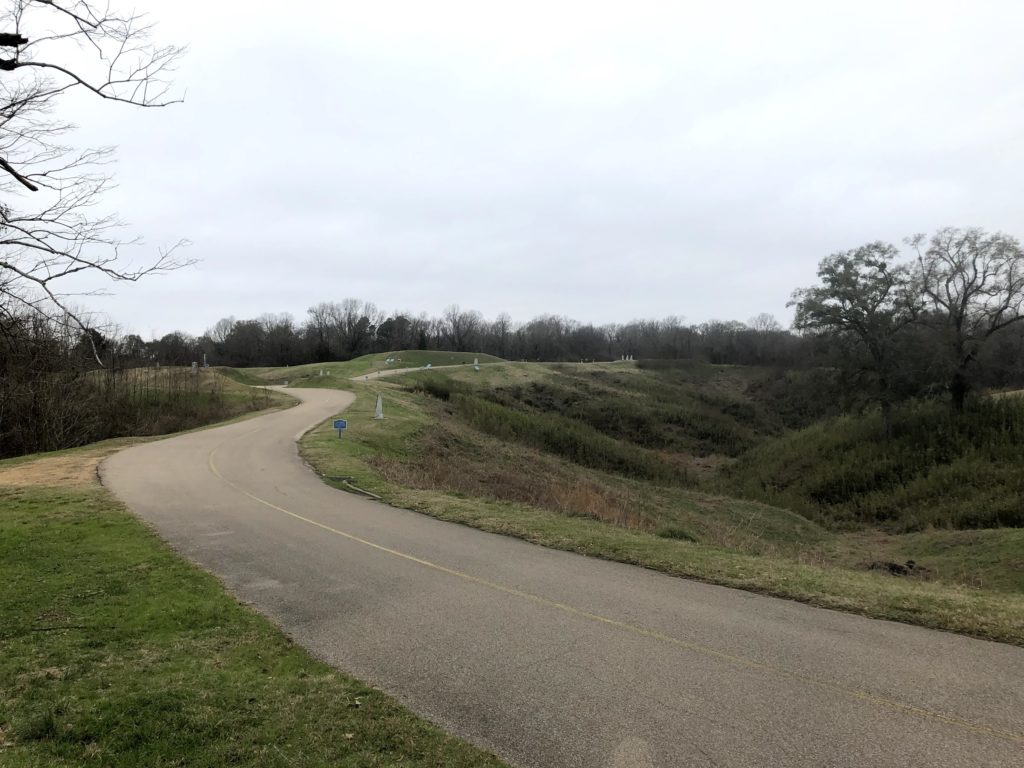
Graveyard Road follows the general line of advance taken by “The Forlorn Hope” advancing on Stockade Redan
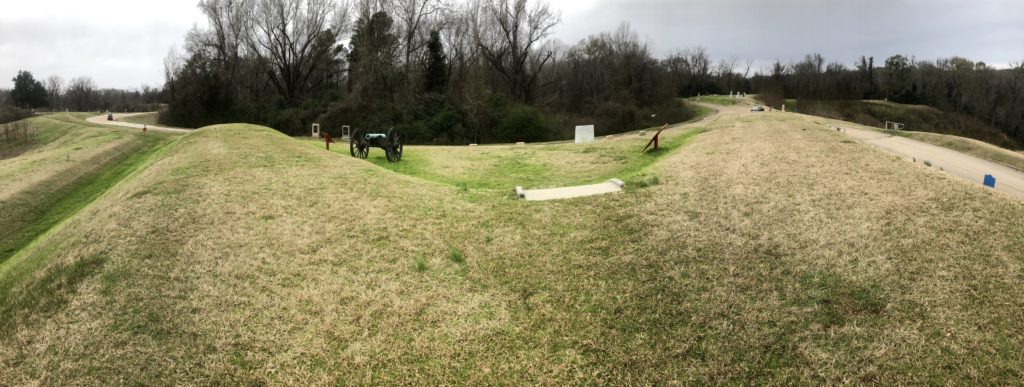
Stockade Redan
One of the newest areas of the battlefield is located near Delta, Louisiana, across the Mississippi River. In 1862, and again early in 1863, Union troops attempted to cut a sixty-foot canal to bypass the bend below Vicksburg’s water batteries. The newest battlefield monument, honoring the 9th Connecticut Infantry and dedicated on October 14, 2008, stands next to one of the few surviving sections of Grant’s Canal.
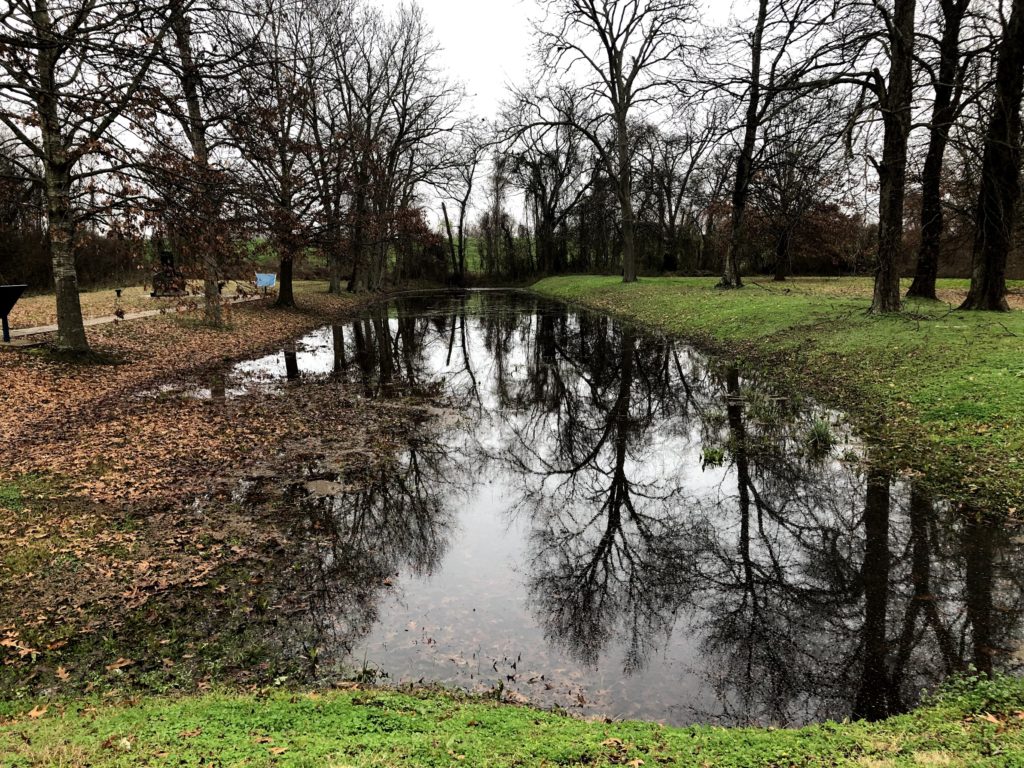

Trackbacks/Pingbacks